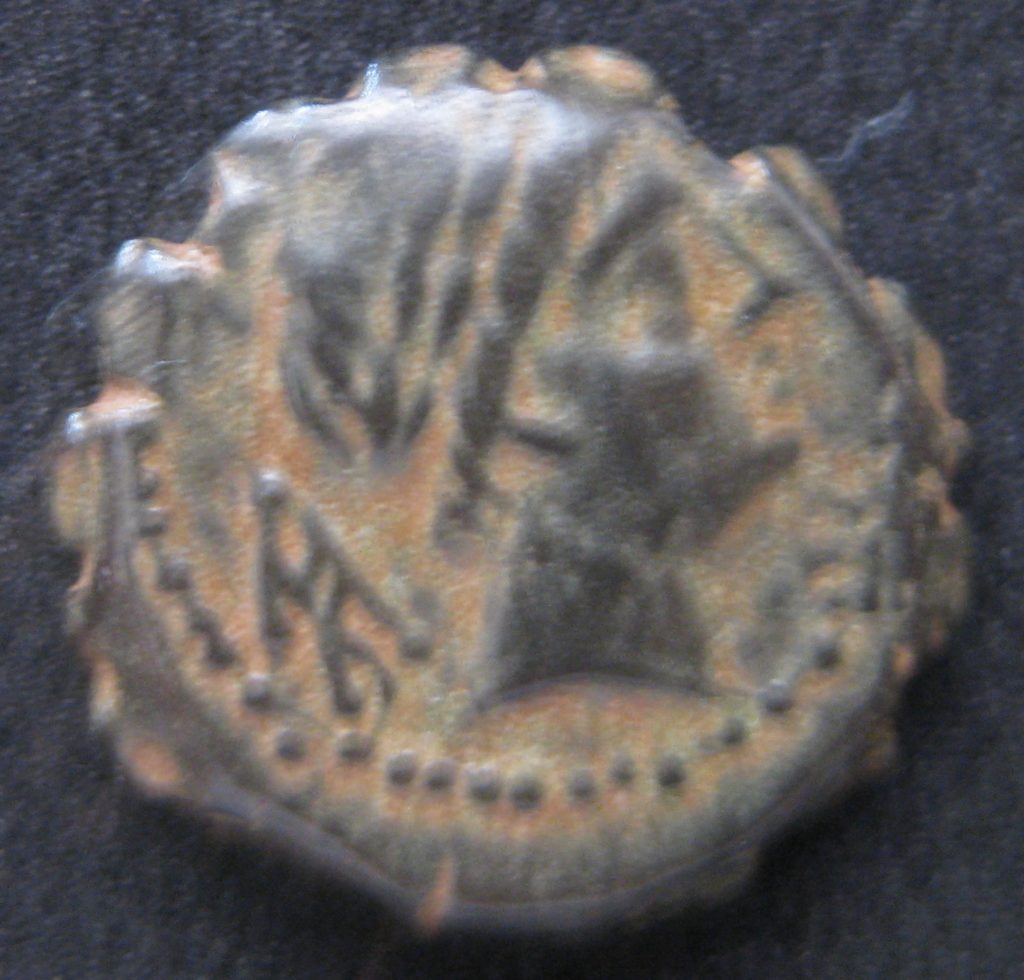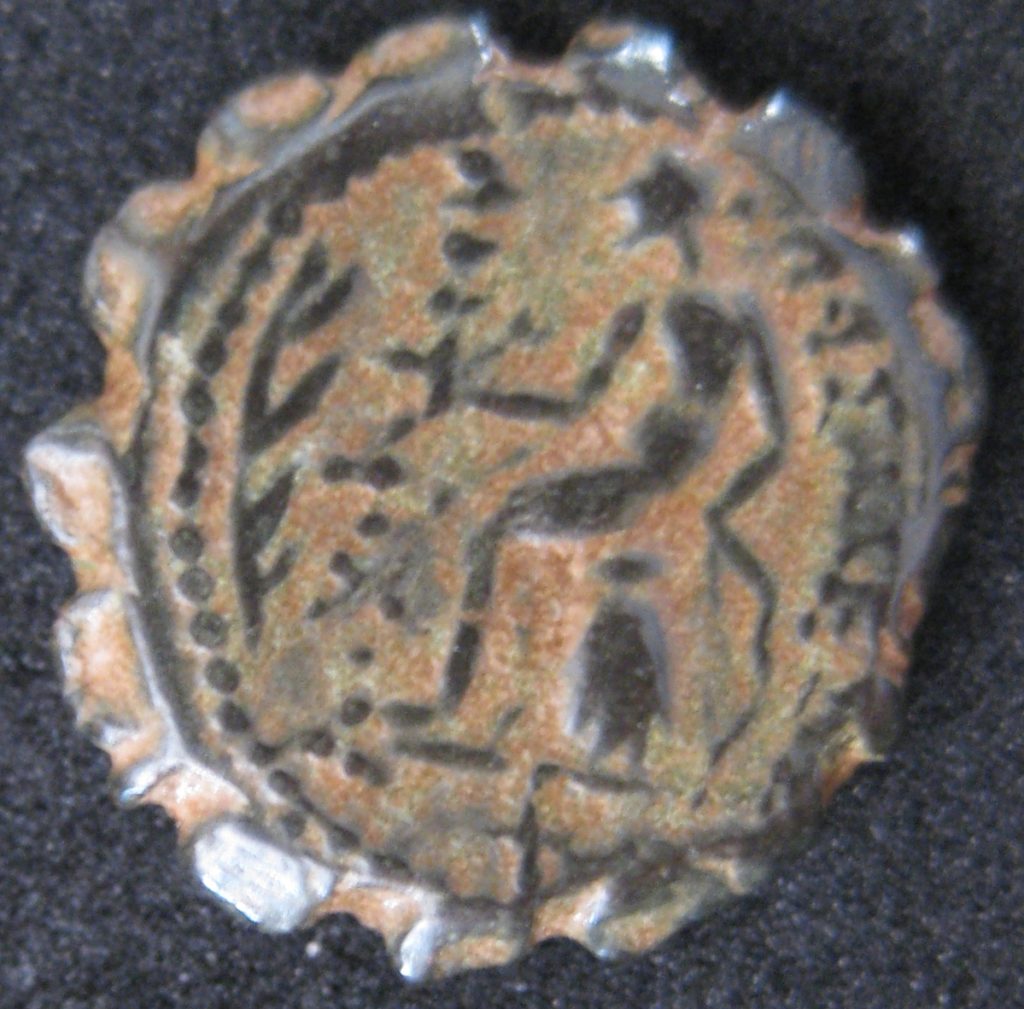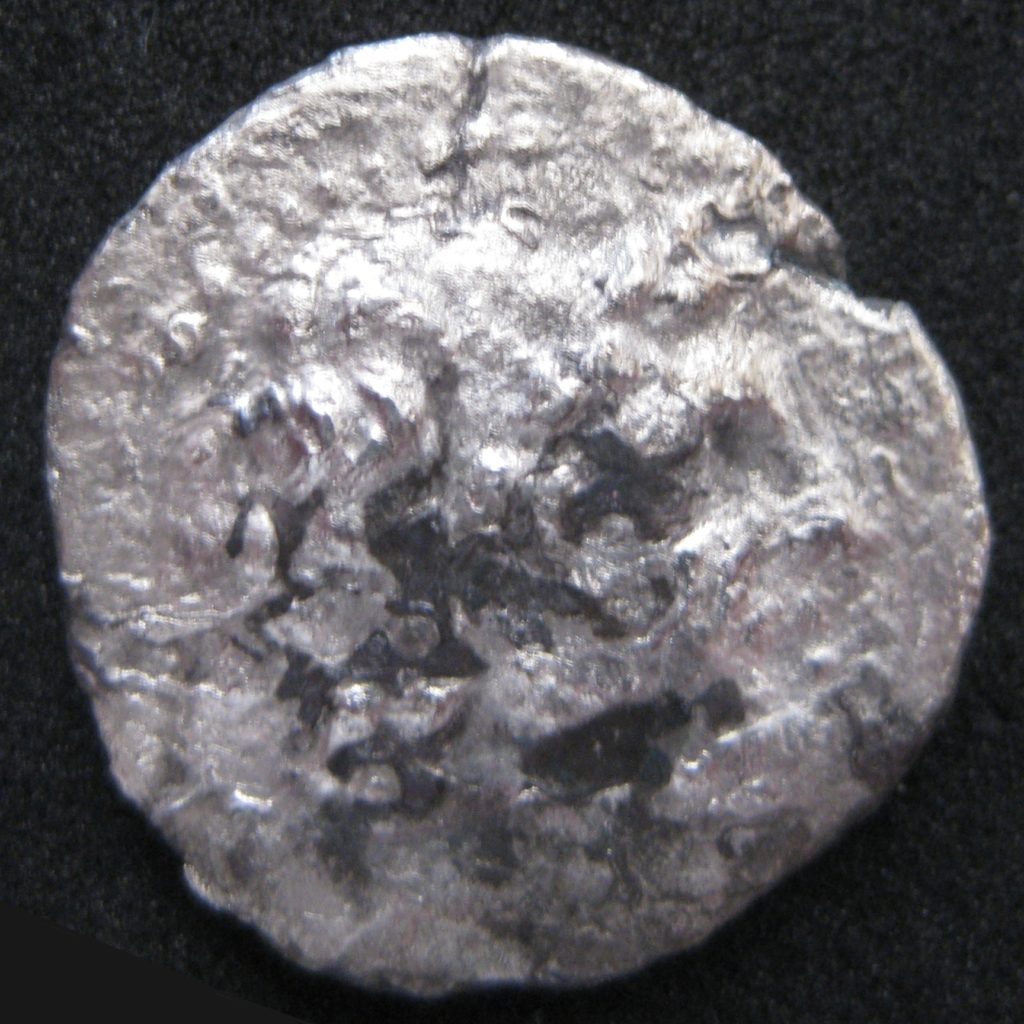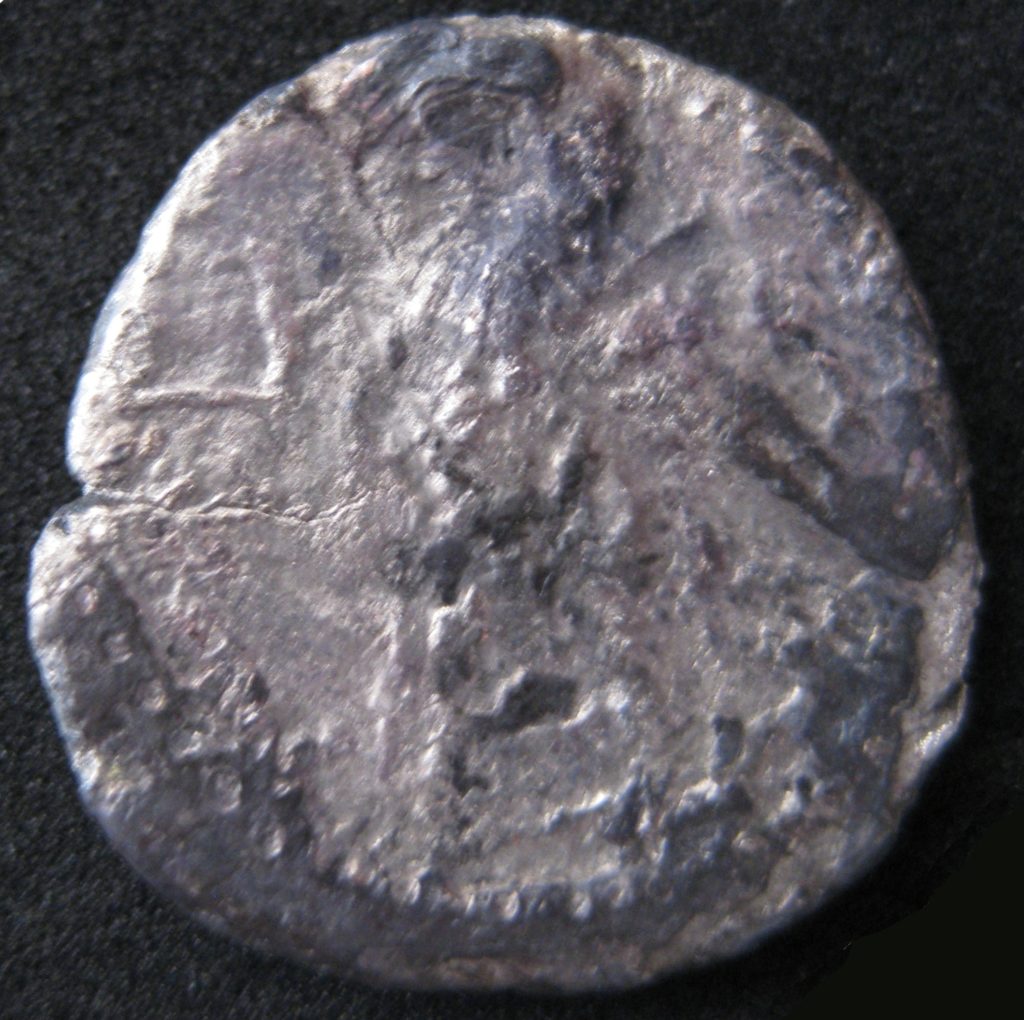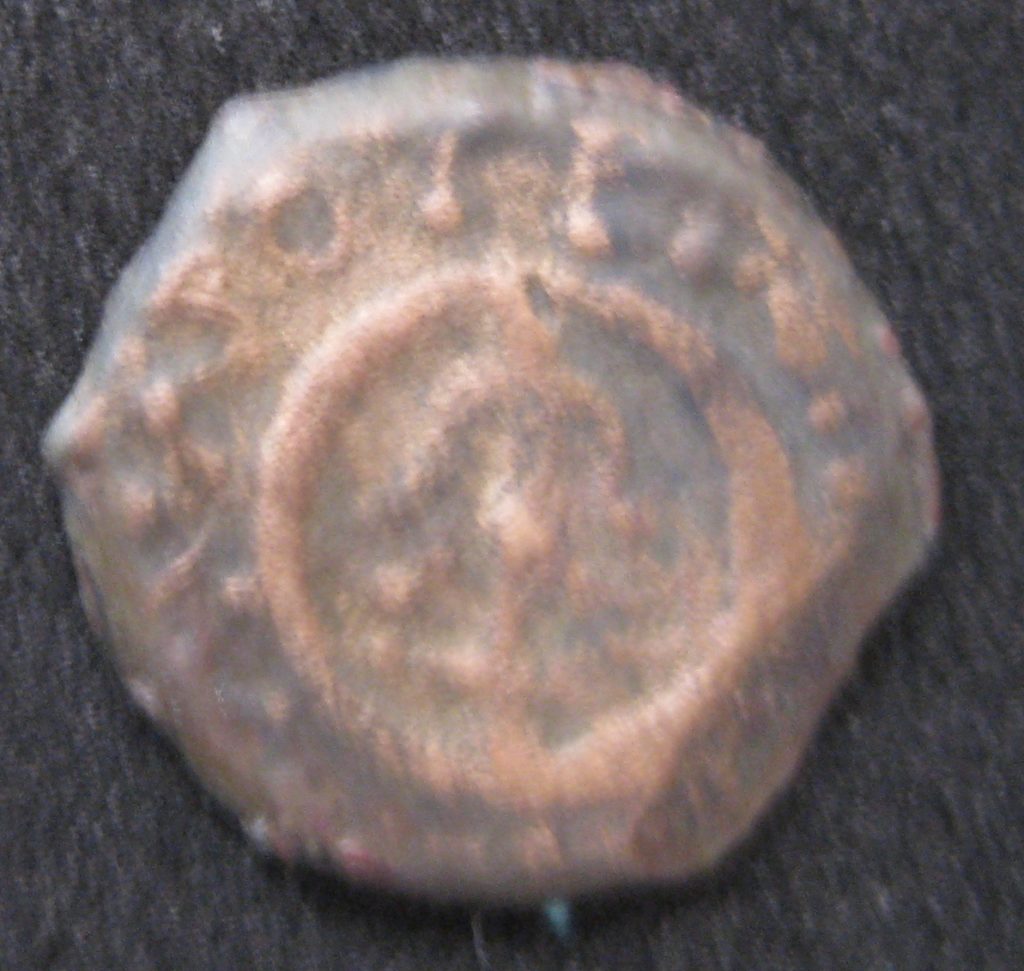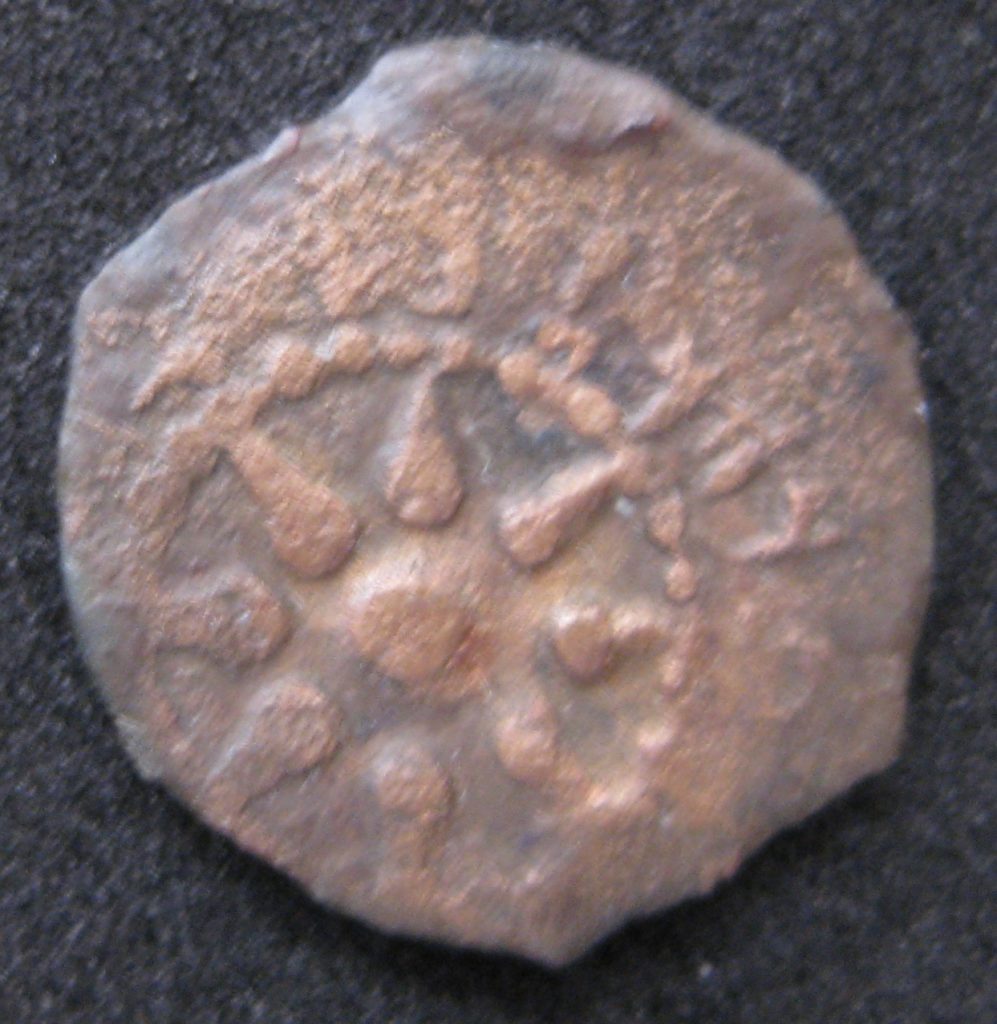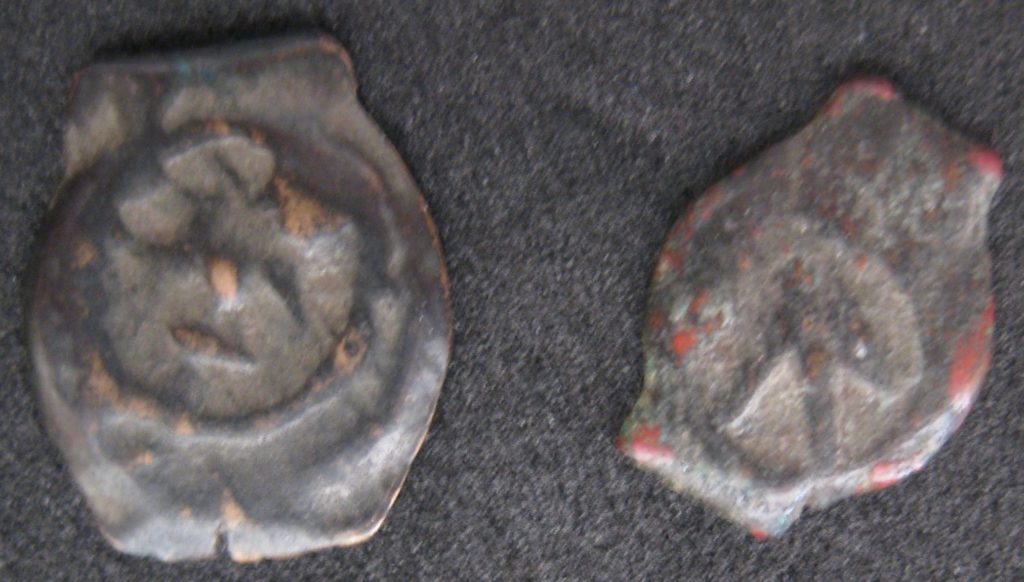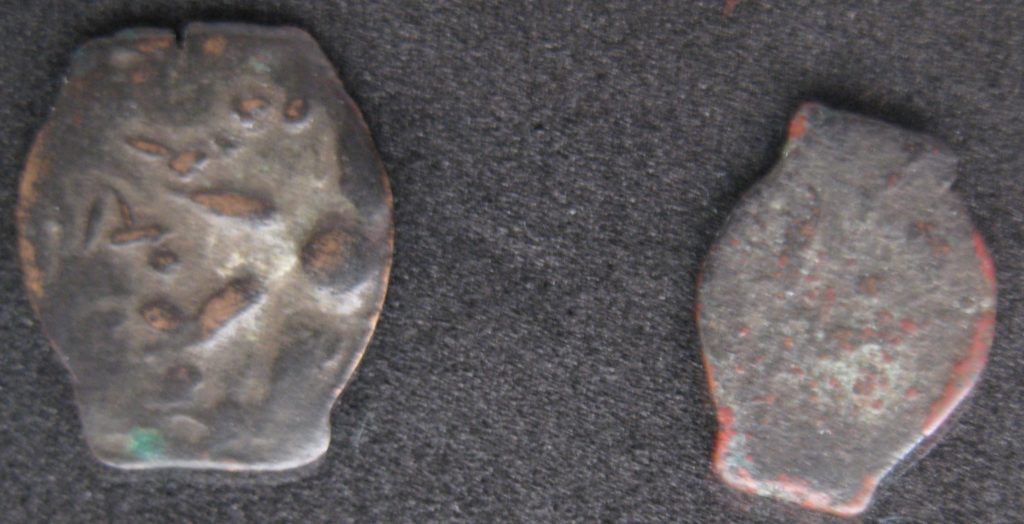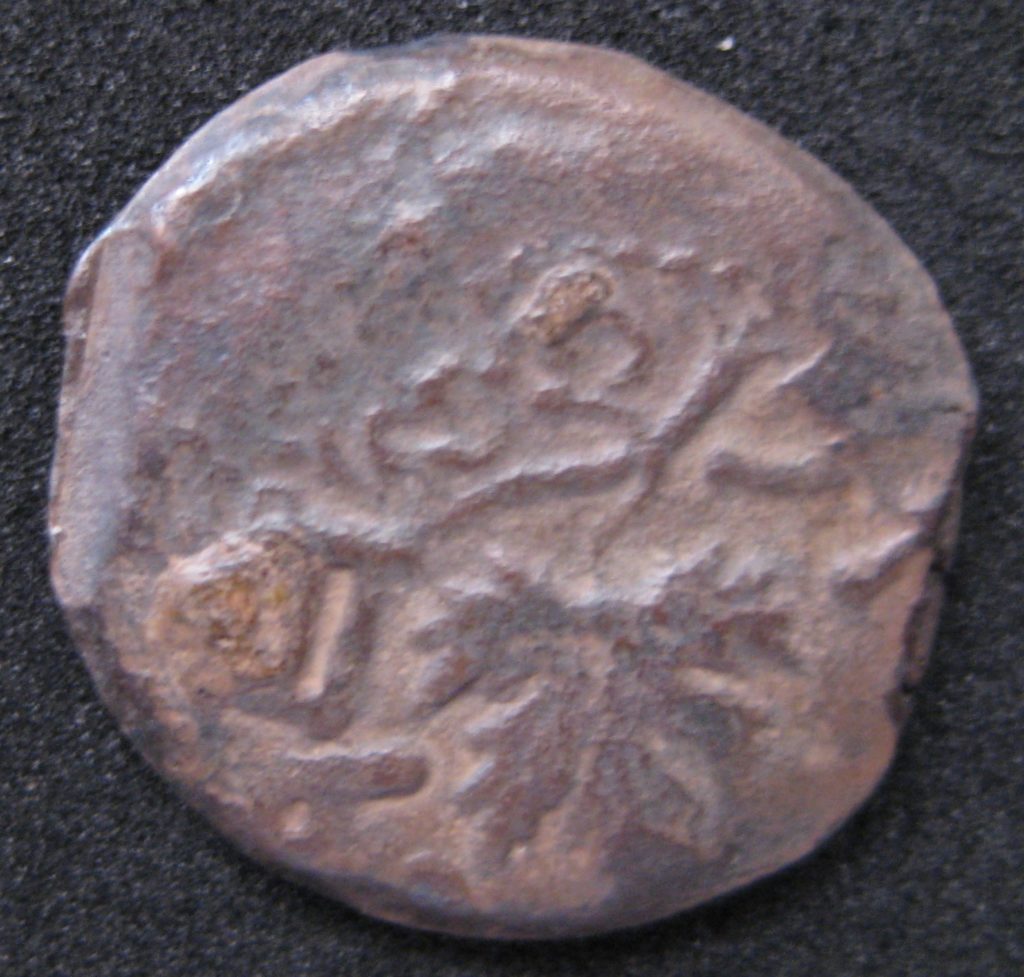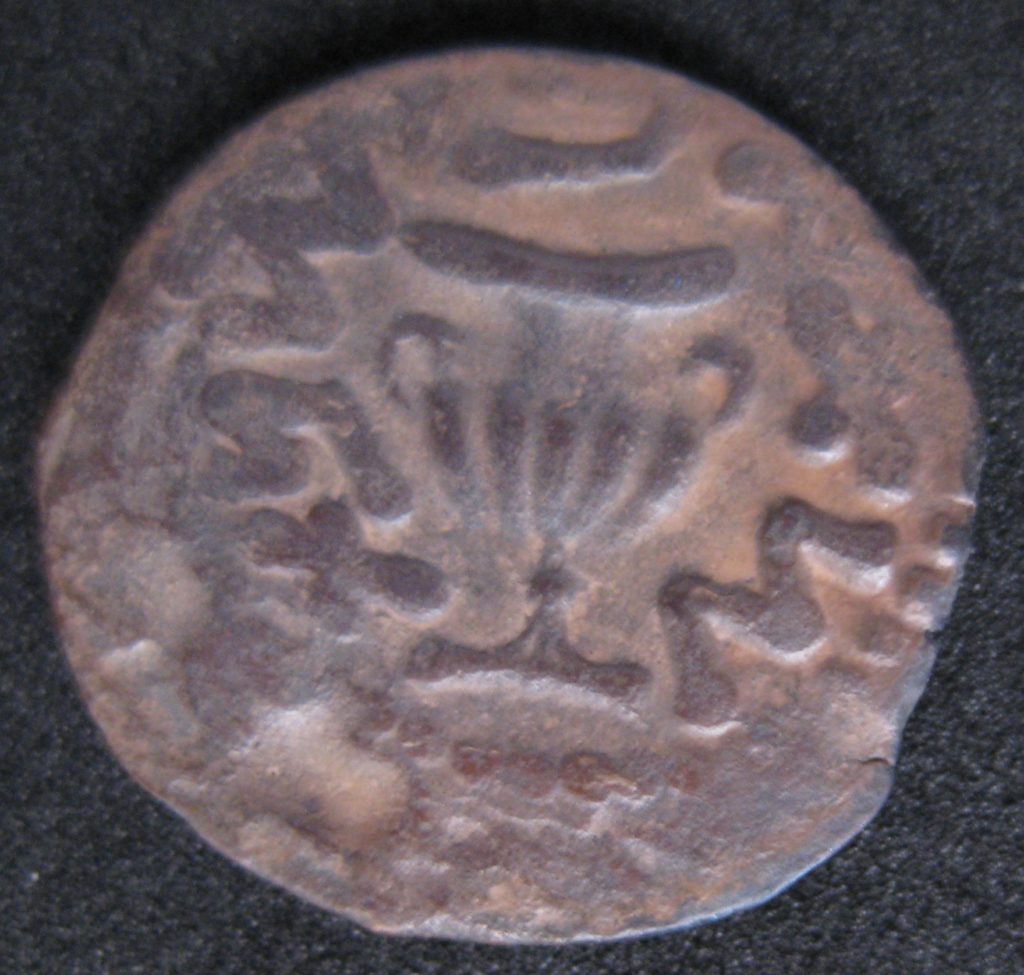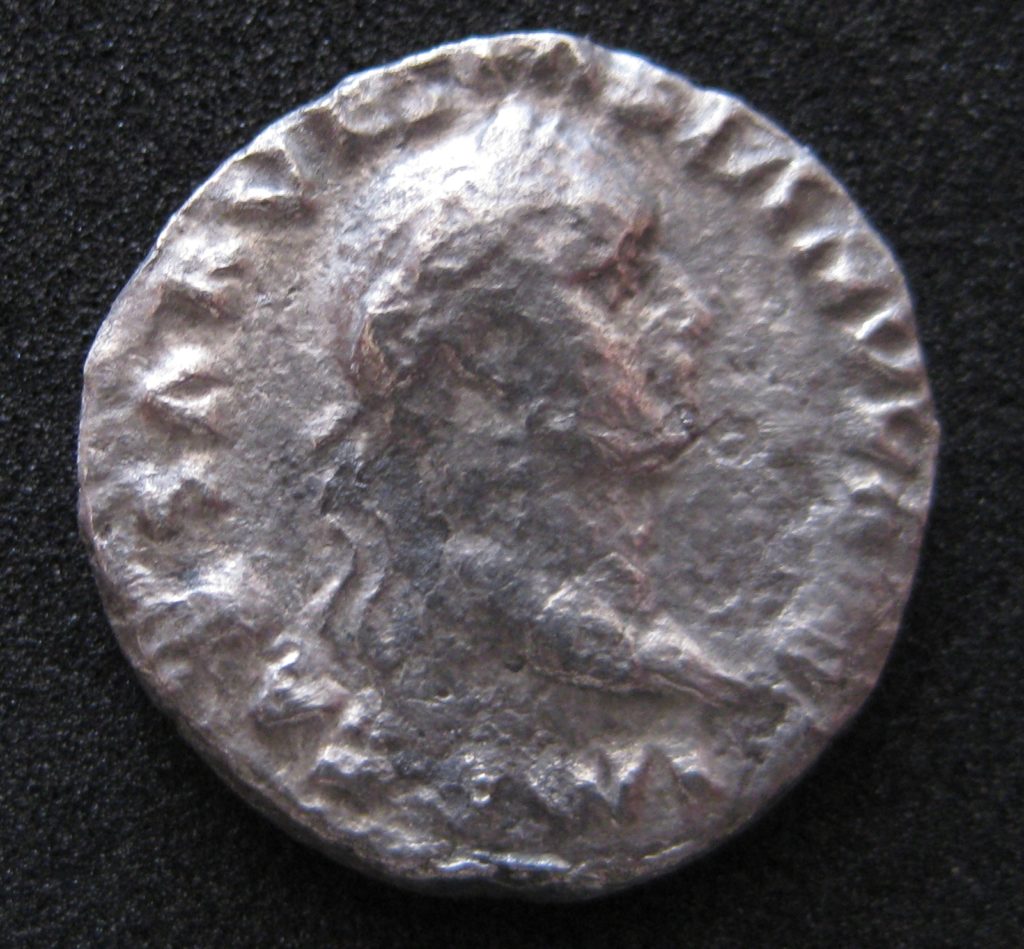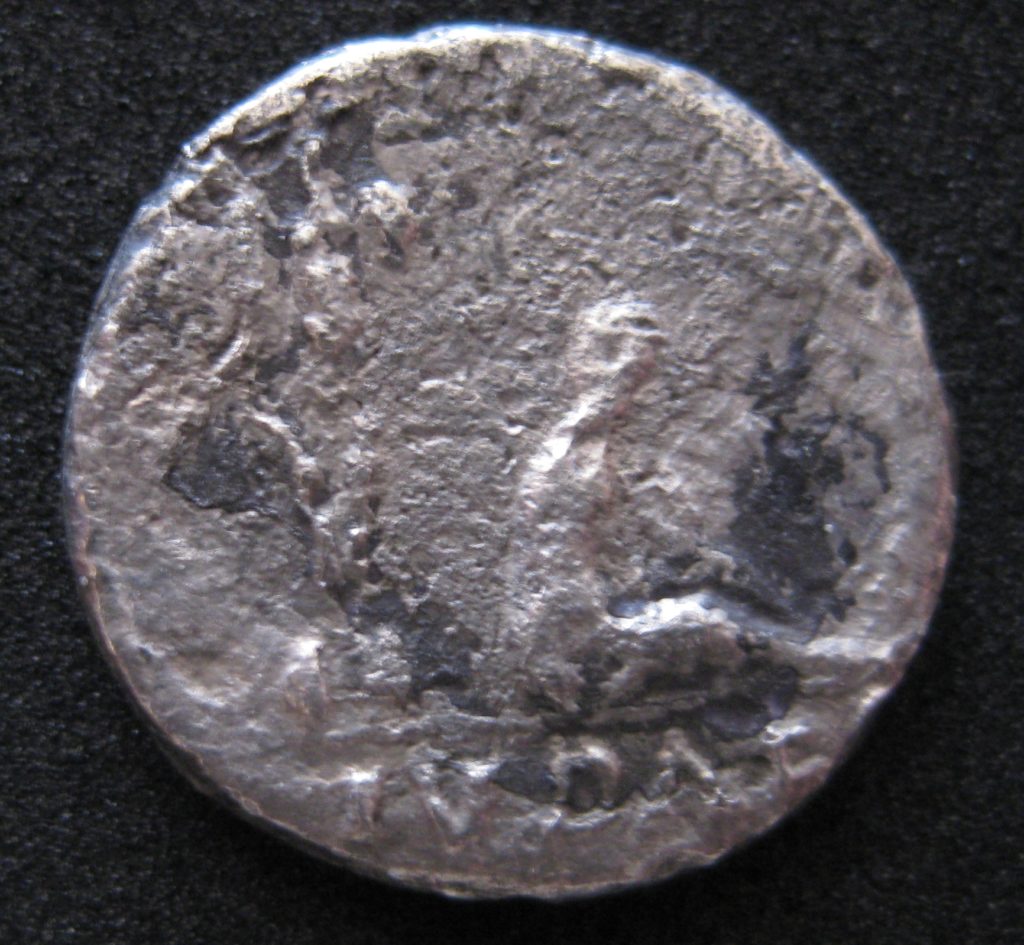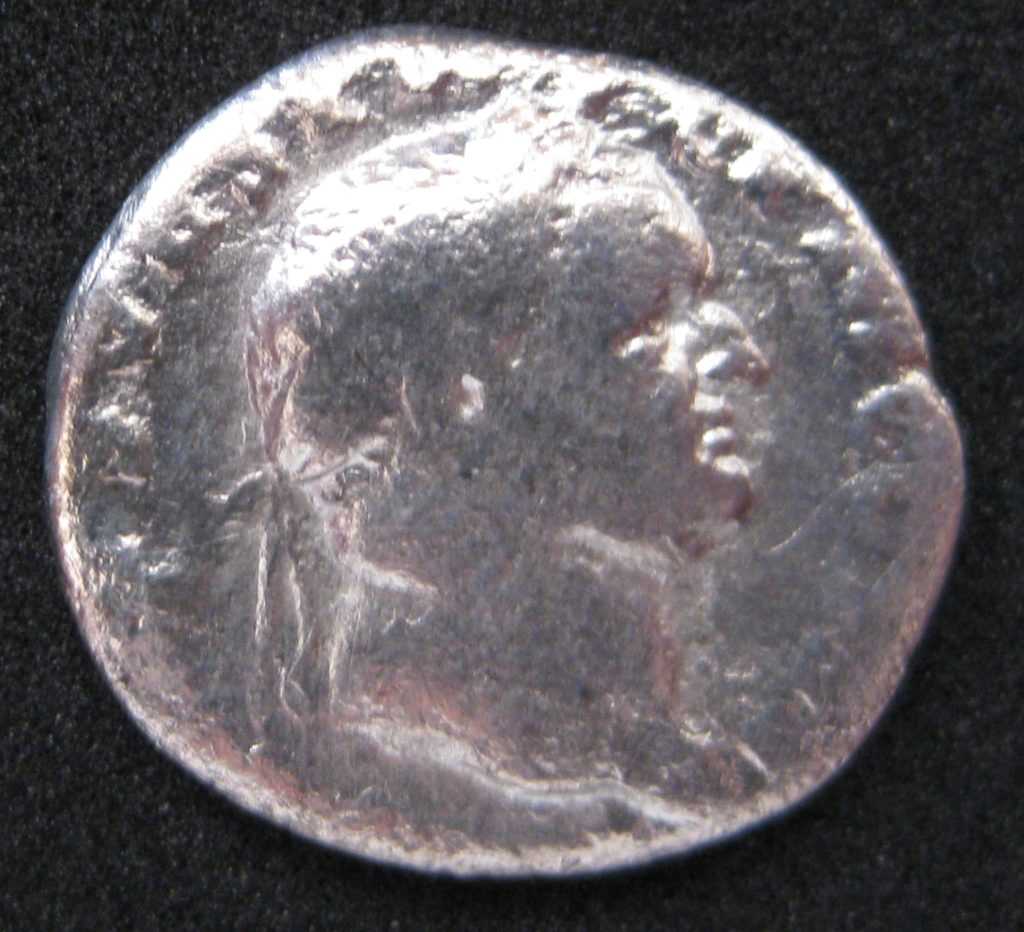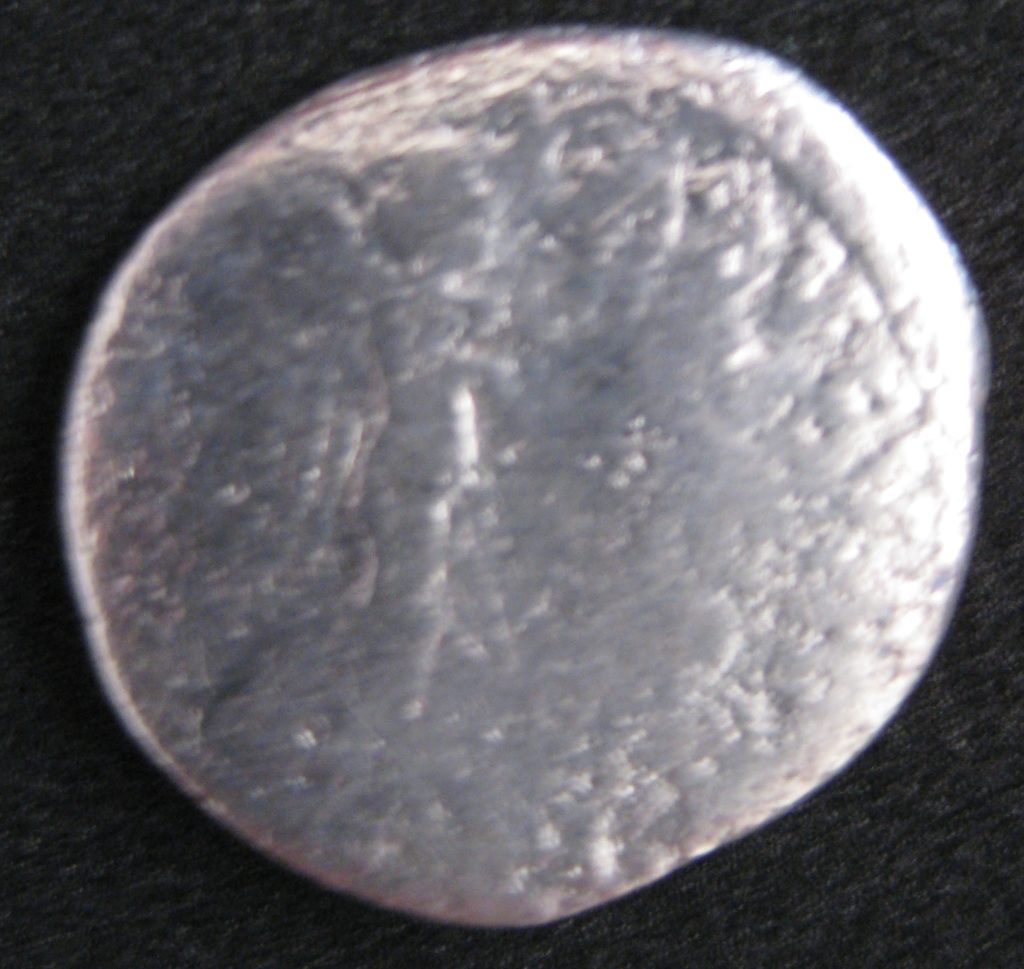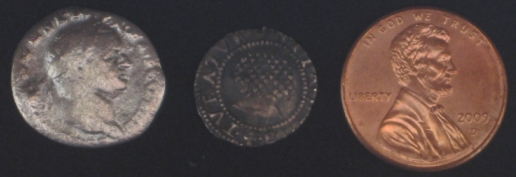
A Brief History of Biblical Coins
Coins, as we know them today, were first produced in Lydia around 650 B.C. Before this time, precious metals were often transferred as ingots bearing a stamp of authority from their producers. These were not commonly used as much of the ancient economy still was based on bartering. Once the Lydian coins began circulation the practice quickly spread throughout the nearby regions.
By 500 B.C. Athens was setting the standard for coinage, a standard that would become widespread thanks to the conquests of Alexander the Great. This system was based on the silver Drachm. One of the most famous Greek coins is the silver Tetradrachm which was valued as four drachms. Drachms would be divided into six silver Obols. There were many other fractional issues that were even smaller. Also there was a gold Stater which was valued at twenty drachms. To make it even more confusing, there was a silver stater that, depending on issue, was worth two or four drachms.
The Attic system spread throughout the Helenized world. It replaced any system that may have been in place, such as in Persia. In Persia, the coins consisted mainly of the gold Daric and the silver Siglos. These were probably the first true coins that the Israelites would have encountered. In fact, it is thought that the first truly Jewish coins (known as “YEHUD” coins) were provincial issues on the Persian standard.
With the division of Alexander’s empire after his death, the region of Judaea was caught in a struggle between the Ptolemies of Egypt and the Seleucids of Persia. Both issued coins in Judaea following the Attic system, but the Seleucid coins seem to be more plentiful because of the large number of small bronze issues. These small bronze coins, called Chalkoi, had five different denominations ranging in size from 1.1 grams to over 10 grams. It is not very clear today about the values of these bronze coins.
For a brief time, Israel gained independence during the second and first centuries B.C. because of the efforts of the Maccabees. During this time, they minted numerous small bronze coins. All these denomination were based on the bronze Prutah. There were a few larger coins minted that were worth up to eight prutahs. The most famous Jewish coin, however, is probably the Lepton which was a half-prutah. This coin is believed to be the “Widow’s Mite”.
Finally, the Romans came onto the scene with a different coinage system. This system spread throughout the Roman empire, but it did not completely eradicate the Greek system. In some areas, both were used. This system lasted throughout the Roman empire with various changes. In fact, coins with the same name had completely different values, and even metals, at different times.
The Roman system could be complex and subject to many variations over time, but we are fairly sure of the values used during the life of Christ. This system featured the silver Denarius, which is the “penny” of the King James Bible. The bronze Sestertius was valued at one-fourth of an denarius. The bronze As (sometimes spelled assarion) was valued as one-sixteenth of an denarius. The bronze Dupondius was valued at one-eighth of a denarius. The smallest bronze coin that was in general use was the Quadrans which was worth one-fourth of an as. There was a gold coin called the Aureus that was worth twenty-five denariuses.
During the Roman occupation of Judaea, local issues of coins were still made and the prutah was made equal to the Roman Quadrans. During the Jewish Revolt from 66 to 70 A.D. more Jewish coins where issued, including prutahs and silver Shekels. The last Jewish coins to be minted until modern times were minted during the Bar Kochba revolt from 132 to 135 A.D.
Examples of Biblical Coins
As I said before, we know very little about the different denominations of Seleucid coins. One thing we do know and appreciate is that they often have “serrated” edges which often remind people of bottle caps. This coin is about 13mm across and features the diademed head of Antiochus Epiphanes on the obverse and a seated deity (Apollo?) on the reverse. It would have been minted between 175 and 164 B.C. most likely during the earlier portion of his reign.
The real interesting thing about this coin to me is the fact that it is a coin of Antiochus Epiphanes. He is one of the worst villains in Jewish history and is prophesied about in the book of Daniel. Antiochus IV one of the first Greek rulers to assume titles of deity, such as “theos epiphanes” or “god-manifest”. He carried on the continuing struggle against the Ptolemies for Judaea. He ruthlessly crushed a rebellion in Judaea that sparked from a false rumor of his death. In 167 B.C., he sacked Jerusalem and executed many Jews. He also made an attempt to Hellenize the Jews by outlawing their religion and traditions. He went so far as to re-dedicate the Jewish Temple to Zeus and offer a pig on its altar (the Abomination of Desolation). These actions sparked the Maccabean revolt.
Antiochus Epiphanes is believed to be the “little horn” in Daniel 8. He is also scene as a foreshadow of the Antichrist in Daniel 9:27. He is also believed to be the “vile person” of Daniel 11. He is also spoken of in the books of the Maccabees and Josephus’ Wars of the Jews.
The Tyrian Shekel was one of the most important coins to the Jews. This coin was used to pay the half-shekel Temple tax each year. This coin was chosen because of it’s correct size, outstanding quality, and easy availability. The choice to use these coins is even more surprising since they featured images that the Jews normally would find abhorrent. The front of these coins shows the head of the deity Melqarth, and the reverse featured an eagle and the inscription “of Tyre the holy and inviolable”.
The use of these coins created another problem for the Jews – how would the people get them? Because of the sacred nature of the coin’s use it was rarely used for any purpose away from the Temple. This created a thriving industry for the “money changers” at the Temple. They would exchange common money for the shekels for a fee. This fee was approved by the Jewish authorities at eight percent.
An interesting note on these coins is that evidence suggests that they were minted for some time in Jerusalem itself. The shekels were minted in Tyre beginning around the year 126 B.C. It would appear that in 18 or 17 B.C. that these coins began to be minted in Jerusalem, where they continued to be minted until the Jewish revolt in 66 A.D. There is an abundance of evidence that supports this change, including changes in style and the locations of finds of the latter styles. To be honest, I haven’t determined which group mine falls in.
Yes, my example of this coin is not the greatest. These are some of the most sought after coins by collectors and good quality ones go for hundreds of dollars. This is what I could afford.
Probably the most interesting of the Hasmonean rulers was Alexander Janneus, the great nephew of Simon and Judah Maccabee. He was not content with ruling as High Priest and adopted the title “king”. He led military campaigns that expanded his kingdom to about the same size as David’s. In the end he fell into disfavor with the Pharisees due to his disregard of his High Priesthood. Josephus states that his death was brought about due to his heavy drinking. He reigned over Judaea from 103 to 76 B.C.
Janneus issued a tremendous amount of coinage. In fact, there is some evidence that some of these coins were still in circulation over three hundred years later. His coins commonly feature two symbols: the upside-down anchor and a star. The anchor was a symbol borrowed from the Seleucids and probably was meant to represent his conquering of the Judaean coastline. The star design is often confused for a wheel, but is actually a star surrounded by rays.
There is a problem in regards to Jewish coins that is nowhere better illustrated than with the coins of Alexander Janneus. The problem is that it can be extremely difficult to tell the difference between prutahs and leptons. Usually the size or weight gives them away, but it is sometimes not so easy. There are numismatists that believe that some of the leptons may actually be underweight prutahs. There are also a large number of coins with crude or incomplete designs which tend to vary also in size and weight.
Why is this important? I feel it is important to be correct and consistent in terminology. I often see coins that I believe are mislabeled for sale. Perhaps more important to the collector is that the famous Widow’s Mite was most likely a lepton. It is highly probable that the mite was a lepton issued by Alexander Janneus.
So, what are the coins displayed here? All three are listed as leptons in the fourth edition David Hendin’s Guide to Biblical Coins. I, however, wouldn’t be surprised to see the first coin listed as a prutah based on its size.
In May of 66 A.D., the Jews revolted against Rome in effort to once again gain independence. This brought the might and wrath of the Roman Legions down upon Judaea under Vespasian and Titus. Jerusalem fell and the Temple was destroyed in 70 A.D. and the final Jewish stronghold of Masada fell in 73.
During the first five years of the revolt, the Jews minted and circulated their own coins. These consisted of silver shekels, bronze prutahs, and various fractional issues. Most of these coins are dated with the year of the revolt, such as my example which is dated “Year Two”. They also usually included a slogan similar to the one displayed on this coin: “The Freedom of Zion”.
Coins were often used to carry propaganda to the masses. One of the most famous instances of this is the “Judaea Capta” series of coins. This spread the news of the mighty conquests of Rome and helped to solidify the power of Vespasian and his sons Titus and Domitian.
These coins were minted in almost every denomination. These can feature vague references to the victory, such as the second coin with a reverse image of Victory and the inscription “Victoria Augusti”. Many show Judaea personified usually as a mourning woman, such as the reverse on the first coin. The most famous inscription on these coins is “Judaea Capta” (“Judaea captured or destroyed”), but often simply the name “Judaea” appears.
Judaea Capta coins were minted throughout the empire for a span of around twenty-five years. Coins of this type and imagery were even minted in Judaea by rulers that had remained loyal to Rome. History records that the Judaean campaign was the only major conflict for Vespasian and his sons and they squeezed every bit of glory from it that they could. The spoils from this campaign was used to build the famed Roman Colosseum
Coins of the King James Bible
One difficult task that any translator of the Bible faces is how to deal with archaic and difficult terms. One area that this is very obvious is with the ancient monetary systems. The dilemma faced is that you can keep the original terms which may be wholly unfamiliar to most readers or try to equate them to more commonly understood terms.
The translators of the King James Bible faced this task, and choose in some cases to use literal translations of terms and in other cases to substitute what they believed to be an equivalent term. Usually they used terms from the English coinage system, which can lead to some confusion for people like we Americans who may not be familiar with their system.
On this page we will look at the different English words used in the New Testament relating to coins and then give information on the ancient coins they refer to. Included are pictures from my small personal collection of coins where I am able to supply them. I hope that it will be of help to you as you study your Bible and give appreciation to the accomplishment of the King James Bible.
Penny

The word “penny” in every instance is the Roman denarius. The denarius was a silver coin that was first minted around 211 B.C. It’s weight at the time of Christ was around 3.9 grams, and was reduced later in the New Testament period by Nero to around 3.5 grams.
The KJV translators choose not to reintroduce the almost forgotten term of denarius and instead substituted it with what they felt to be an equivalent coin of the time – the English penny. Historians believe that its roots can be traced back to the Roman denarius, as evidenced by its abbreviation of “d.” that was used until 1971. The English penny was a silver coin that began in 785 A.D. and was originally around 1.3 to 1.5 grams in weight. By the time of King James I its standard was around .5 grams.
The general thought as to why they used “penny” instead of “denarius” is for the understanding of the average reader. As you can see in the picture, they are definitely not equal in size. Their assumption was that the two coins were close enough in value as to make it accurate. It is impossible to determine if their economic values were close, but they would have been the most widely used silver coins at their times.
To Americans like myself, the use of the term “penny” can lead to confusion. The American penny is presently our smallest minted coin, equal to one percent of a dollar. The British penny was not their smallest coin (the farthing was) but appears to be their most common silver coin.
References to penny/denarius – Matthew 18:28, Matthew 20:2, Matthew 20:9-10, Matthew 20:13, Matthew 22:19, Mark, 6:37, Mark 12:15, Mark 14:5, Luke 7:41, Luke 10:35, Luke 20:24, John 6:7, John 12:5, Revelation 6:6.
Farthing
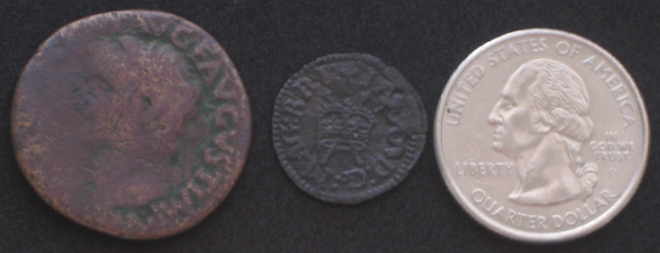
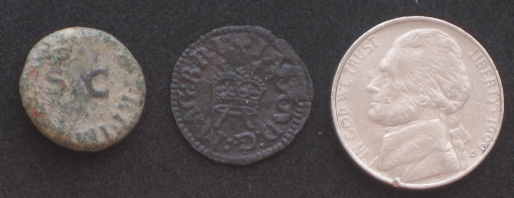
Two different words are translated “farthing” in the New Testament. These two words are two different coins.
The first that we will look at the Roman “As” (I capitalize the coin “As” to distinguish it from the verb “as”). The Roman As dated back to around 280 B.C., and under Augustus it became a copper coin valued at 1/16th of a denarius. It was the lowest continually produced Roman coin, which smaller denominations like the semis and the quadrans being infrequently minted. In New Testament times, the coins weighed about 12 grams. Sometimes it is referred to as an “assarion”.
The second coin is the Roman “Quadrans”. It was produced off and on until the second century. This was the smallest Roman coin of the time, equal to 1/4th of an As.
The English copper farthing was actually introduced by King James I. Until his reign English monarchs considered putting their name or image on anything less than silver or gold as beneath the crown. There had been a few silver farthings minted, but this was very rare. In Scotland where James had earlier reigned the practice of minting such copper coins was very popular. The farthing was valued as 1/4th of a penny.
References to farthing/as – Matthew 10:29, Luke 12:6
References to farthing/quadrans – Matthew 5:26, Mark 12:42
Mite

I believe this is the most famous coin of the Bible, and one of the most difficult to explain. Not only does it get a little complicated in tracking down the type of ancient coin referred to, but even the English translation seems somewhat strange.
The Greek word used in each case is “lepton”, which supposedly refers to the smallest Greek coin. The coin that is being described had to have been the smallest coin in active circulation at the time. The smallest coins in circulation at the time were Jewish minted coins from the first century B.C. These Jewish coinage was based on the “prutah”. Some believe this to be the coin referred to. These were also some half-prutahs (commonly called leptons based on association to this story) and even under-weight prutahs minted by the Jewish king/priest Alexander Jannaeus from 103-76 B.C. Although others minted half-prutahs, including Herod the Great, the sheer volume and availability of Jannaeus’ coins make it most likely that his coins were used.
Mark 12:42 is quite helpful in that it gives further information on the coin mentioned. It states that two mites (leptons) were worth a farthing (quadrans). The Roman Procurators and Governors that came after Herod sometimes minted prutahs, but they raised the coins size and value to equal the Roman quadrans. This means that the coin in question probably wasn’t minted by one of them. This does make it most likely to be the smaller prutahs of the Jewish Hasmonean dynasty and of Herod that followed, or the half-prutahs. In hand, it is very difficult to tell the difference at times between a prutah and a lepton, and many confuse them for each other.
So where did they get the word “mite”? Most believe the term itself as it relates to coins traces to a Flemish coin dating from the early 1300’s. Easton’s Bible Dictionary says that is a contraction of the Latin word “minutum”, meaning “small”. The 1913 Webster’s dictionary says that it was an English coin valued at 1/3 of a farthing, of which I have found no other reference. In the late 1300’s, Chaucer wrote in his “Canterbury Tales”, “For in effect they be not worth a myte.” Wikipedia has a chart stating that the mite was a British coin from the time of the Tudors worth 1/6 of a farthing. I remember also reading somewhere that there where no actual English mite coins, that is was just used for accounting purposes. Whatever the word origin is, the term quickly became associated primarily with these Bible passages.
One fanciful story that I recall hearing had that it was customary in the region to give something in the offering, and most gave the smallest coin – the mite. One of the King James translators was familiar with this and pushed for use of the word. I’m not sure about this, I just remember hearing a preacher tell the story.
References to mite/lepton – Mark 12:42, Luke 12:59, Luke 21:2.
Piece(s) of Silver, Tribute, Money
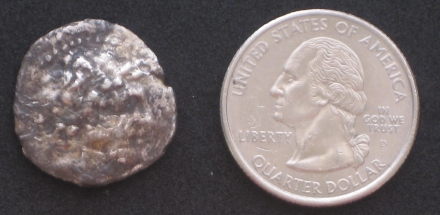
In spite of being a rather vague translation, many times these words are the literal translations of the Greek. Many times the Greek text simply says “a piece of silver” and the King James Bible says “a piece of silver”. Most of these references refer to shekels or half-shekel based on the context. There a couple of exceptions and variations well discuss after the shekels.
Some of the most important coins of to the Jews were the shekels of Tyre. These coins were the official coinage of the Temple. They were used to pay the “Temple tax” of a half-shekel for each man. They are also famous for being the money used to pay Judas.
The shekel was made of silver and was equal to the Greek tetradrachm. The smaller half-shekel was equal to the Greek didrachm. These coins featured the god Melqarth on the obverse and an eagle on the reverse. Despite this pagan imagery, these coins were acceptable at the Temple because of their weight, purity, and availability.
The words in the Greek text to describe the shekels varies greatly. The words “stater” and “argurion” are used for the shekel. The word “didrachm” is used for the half shekel. These coins are translated into English as “piece(s) of silver”, “piece of money”, and “tribute”.
The first exception is a reference to the Greek drachm. The use of the Greek coin system was widespread throughout the eastern part of the Roman empire, thanks mostly to Alexander the Great’s conquering. The drachm was a silver coin that was practically equal to the Roman denarius with just a tiny percentage difference in the weight.
Another obvious reference to a coin that is unclear in both the English and Greek occurs in Luke 15:8. The Greek word used is the same generic word used to describe the shekel. In this case, because of the location of the event and other factors, I believe it is referring to the Roman denarius.
Not every use of the word “silver” notes a coin. Many references are simply to the precious metal. There are also times where the word “money” is used generically.
References to shekel – Matthew 17:17, Matthew 26:15, Matthew 27:3, Matthew 27:5, Matthew 27:6, Matthew 27:9
References to half-shekel – Mark 17:24
References to drachm – Luke 15:8
Possible reference to denarius – Acts 19:19
Coins in the Old Testament
For the bulk of the history covered in the Old Testament, what we think of as coins or money would have been unknown. History and archaeology bear out this fact. Barter was the basis of the economy so literally anything had value in trade. Livestock was a common expression of wealth (Genesis 13:2) and was used often in trade (Genesis 21:28). We can see the growing use of precious metals in trade in the days of Abraham (circa 2,000 B.C.) many centuries before coins were first used in Lydia.
Precious metals were weighed in each transaction when used in trade in the days before coins (Genesis 23:16, Jeremiah 32:9-10). A standard weight for the Shekel was set in Mosaic Law (Exodus 30:13) and there are many verses warning about using wrong weights (Leviticus 19:36, Deuteronomy 25:13, Hosea 12:8). The precious metals used in trade would likely have been in the form of ingots or jewelry.
In the King James Bible the word “money” is used over 100 times in the Old Testament. In almost every case it speaks of silver used in trade or payment. It is tempting to consider this as money in the modern sense but historically speaking that is incorrect. Precious metals were one part of the barter economy but were not the basis of it lie today. We think of value today as “how many dollars is that worth?” but that is not how ancient people would have thought.
There are many instances of silver being required as part of an offering or tax in the Mosaic Law. I think the best interpretation of these verses is to not think of this a money (a dollar amount) but a specific object of value just as if it were a sheep or goat. Provision is given at times to convert some offerings into silver (Deuteronomy 14:24-25) for travel or convenience but it is still best to see that God said silver was an acceptable alternative.
As far as actual coinage, the first Old Testament references are for Persian coinage, specifically the Daric (the “dram” of Ezra 2:69, Nehemiah 7:70-72).
